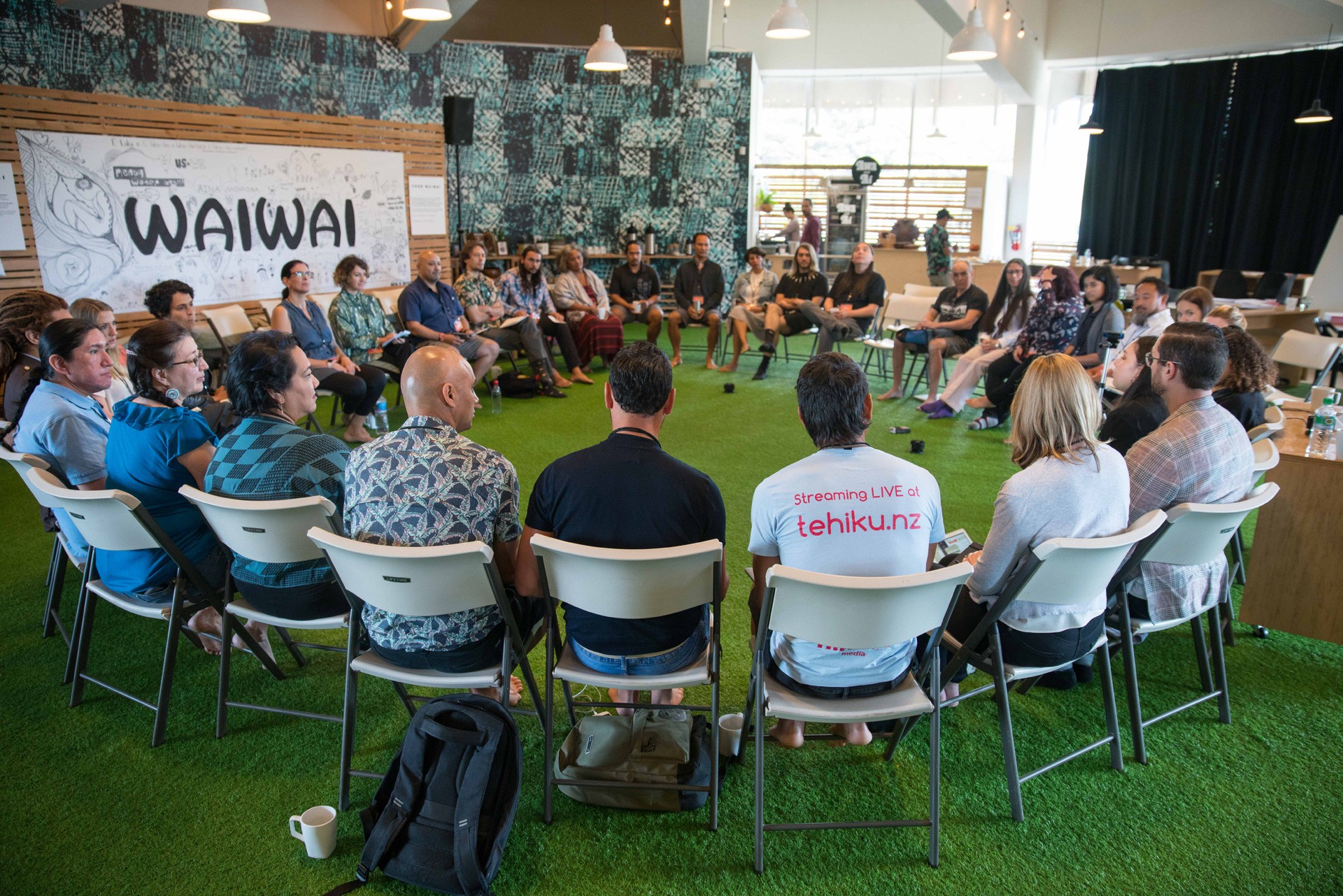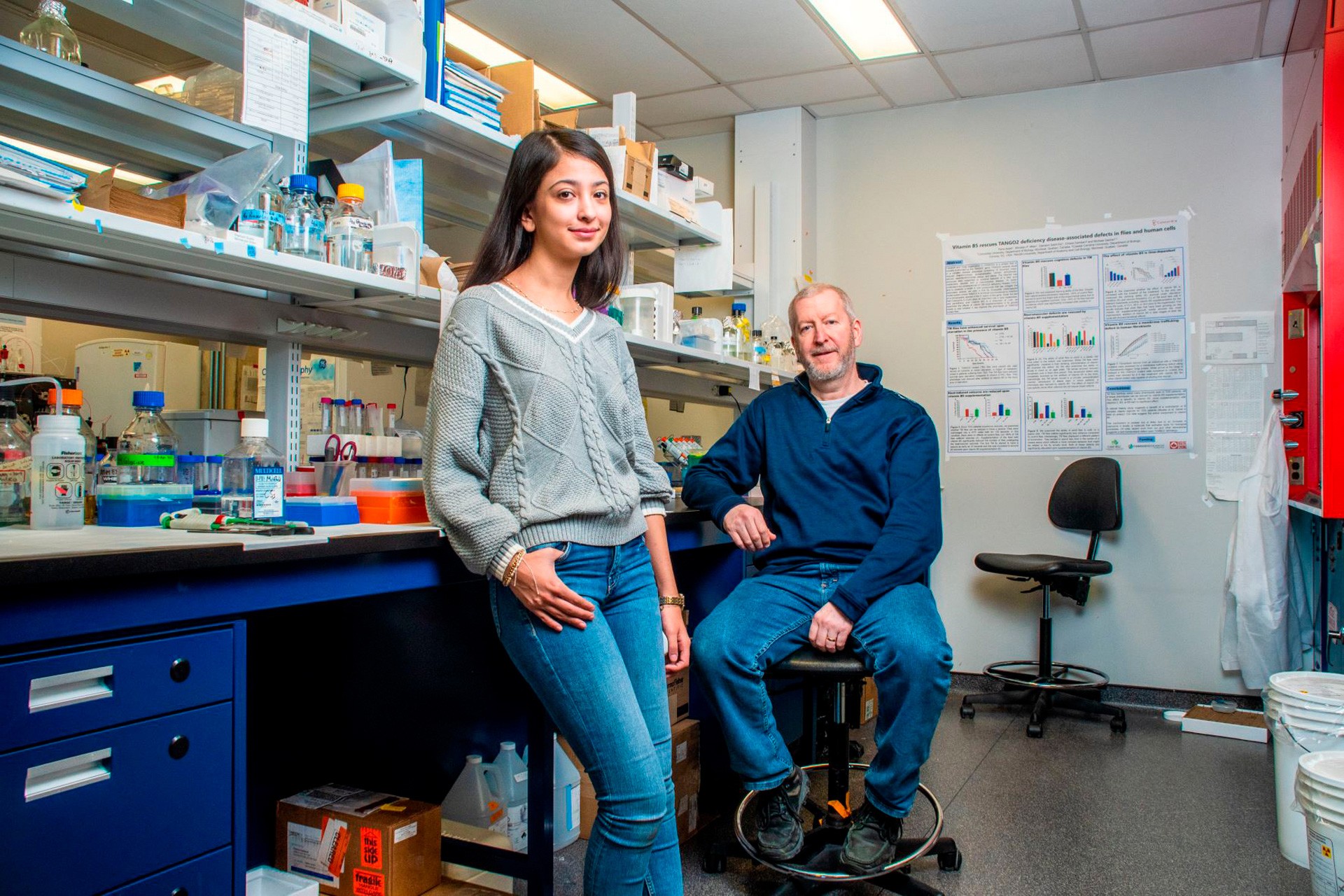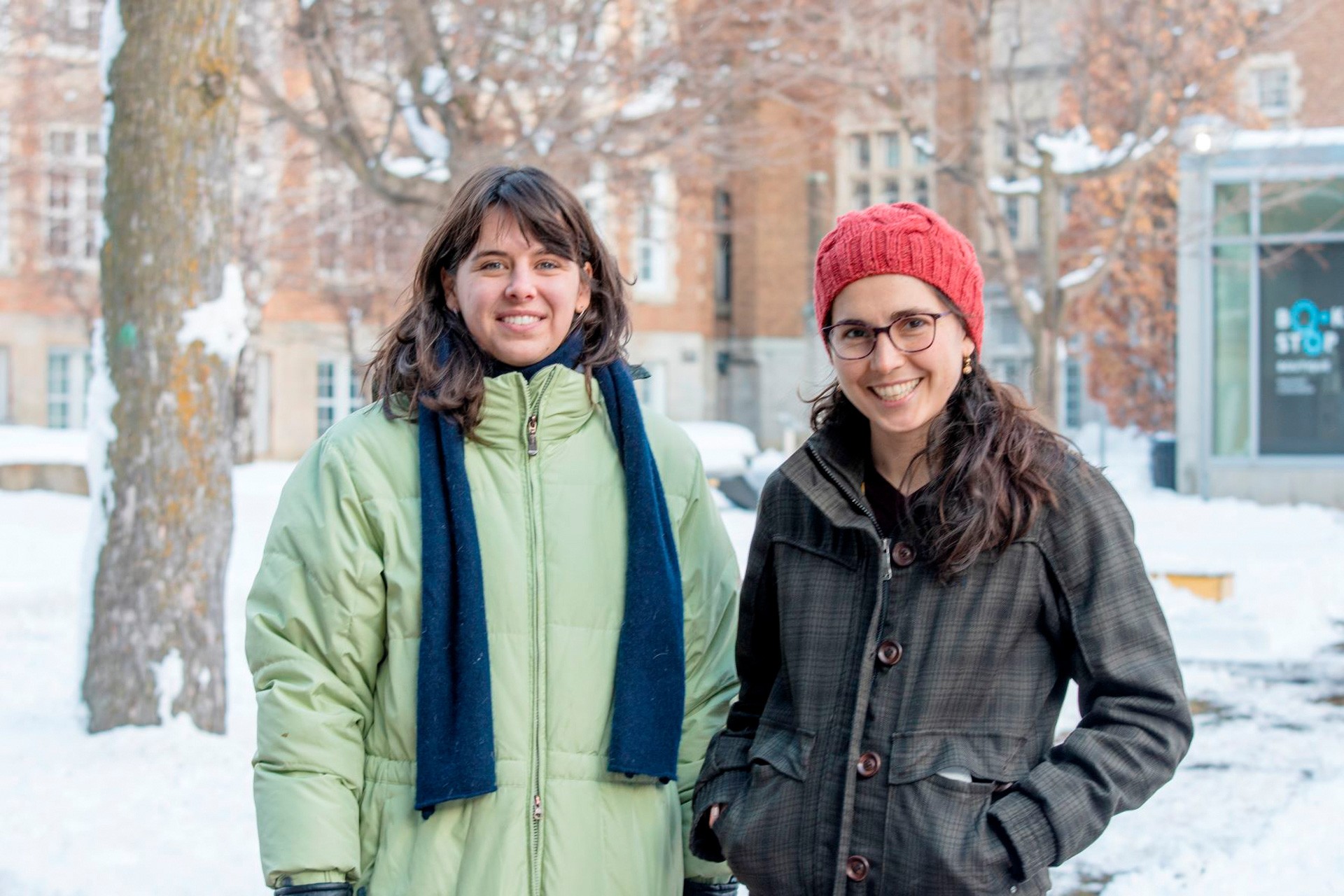NEXT-GEN
DISCOVERY & INNOVATION
Uncovering new possibilities
Discovery highlights
$23M grant for Concordia-led artificial intelligence research team
Professor Jason Edward Lewis and colleagues were awarded a grant worth almost $23 million from the New Frontiers in Research Fund. Lewis is co-leading an international, interdisciplinary team of experts that will explore how Indigenous communities and AI scientists can mutually benefit by augmenting the frameworks of Indigenous knowledge with innovative AI technologies. He is the Concordia University Research Chair in Computational Media and the Indigenous Future Imaginary and a professor in the Department of Design and Computation Arts.
The Indigenous-led project, Abundant Intelligences: Expanding Artificial Intelligence through Indigenous Knowledge Systems, involves 37 co-investigators and collaborators, the majority Indigenous researchers and community members. It is headquartered at Concordia’s Indigenous Futures Research Centre, where Lewis is co-director.
“The current trajectory of AI development prioritizes Western ways of thinking about humans and our world,” he says. “The plan is to explore a more extensive spectrum of intelligent human and non-human behaviours that we use to make sense of the world.”
 Jason Edward Lewis: “The plan is to explore a more extensive spectrum of intelligent human and non-human behaviours that we use to make sense of the world.”
Jason Edward Lewis: “The plan is to explore a more extensive spectrum of intelligent human and non-human behaviours that we use to make sense of the world.”
Vitamin B5 may be the key to treating a rare genetic condition
Published research led by undergrad Paria Asadi found that vitamin B5 can mitigate the dangerous effects related to mutations in the transport and Golgi organization 2 (TANGO2) gene in fruit flies. In the study, flies with TANGO2 deficiency disease (TDD) died faster, had mobility and learning issues and neuromuscular defects. Supplementing them with vitamin B5 improved or eliminated these symptoms in some.
Individuals with TDD can’t properly metabolize lipids — fatty compounds that perform several important functions — and the researchers suspected boosting vitamin B5 production may affect lipid metabolism in the flies. “And that was exactly the case,” reports Michael Sacher, biology professor and the paper’s supervising author.
 From left to right: Paria Asadi and Michael Sacher.
From left to right: Paria Asadi and Michael Sacher.
$497K to help Canada meet its emission reduction
To help meet the country’s goal of reducing emissions to 40 per cent below 2005 levels by 2030 and reach net-zero emissions by 2050, the Government of Canada’s Climate Action and Awareness Fund awarded $497,000 to a Concordia research team. The funding will support the development of innovative technologies to help Canadian businesses decrease their greenhouse gas emissions.
Principal investigator Yaser Khojasteh, assistant professor of chemical and materials engineering, and his team will focus on techniques to develop ecofriendly, cost-effective CO2 capture and utilization processes. “To date, no research on the design and simulation of these technologies has been conducted,” he relates.
Faster, more accurate 3D modelling tool recreates a landscape’s digital twin
Concordia researchers have developed a new technique that can help create high-quality, accurate 3D models of large-scale landscapes. The researchers provided a framework that reconstructs the geometry, structure and appearance of an area using highly detailed images taken by aircraft and then processed to produce precise 3D models of cityscapes, landscapes or mixed areas.
Charalambos Poullis, professor of computer science and software engineering, and PhD student Qiao Chen developed the framework, called HybridFlow. “It can be used by stakeholders and authorities to simulate ‘what-if’ scenarios in cases of flooding or other natural disasters,” Poullis says.
Concordia urban forest-mapping project wraps up
A Concordia project cataloguing the diversity of the urban forest in a Montreal residential neighbourhood found that private residences and institutions such as schools and places of worship usually had different tree populations from those planted by municipal authorities in city parks and roadways or sidewalks. While the city-planted trees tended to be bigger and more resilient, the often-smaller private trees served other functions, such as providing fruit, flowers or aesthetic beauty.
“Our findings likely reflect the different motivations, goals and aims among decision-makers of where trees were planted,” says MSc student Kayleigh Hutt-Taylor, who co-led the project with Carly Ziter, assistant professor of biology.
 From left to right: Kayleigh Hutt-Taylor and Carly Ziter.
From left to right: Kayleigh Hutt-Taylor and Carly Ziter.
Identifying fake news requires actively open-minded thinking
People who actively seek information that may contradict their pre-existing beliefs are more likely to correctly identify a fake headline on social media and avoid them in future, according to a published study co-authored by Mahdi Mirhoseini, assistant professor of supply chain and business technology management.
The researchers compared two theories that explain why people believe fake information: classical reasoning, which says that people who think critically will eventually arrive at the truth; and motivated reasoning, which says that people will stick to their ideology no matter what. To arrive at the truth independent of political beliefs, Mirhoseini reports, “classical reasoning is more powerful than motivated reasoning.”
Imperial or metric measurements can alter food price perception
In a published paper, researchers revealed that consumers pay far more attention to the numerical component of a price than its measurement unit, whether pounds, kilograms or some other, which can affect how they perceive the expensiveness of products or a particular store’s overall price image.
“It’s a uniquely Canadian experience, because prices of produce here are displayed in pounds and kilograms at the same time,” says Mrugank Thakor, professor of marketing, who co-authored the paper with his former students Yonglan Liu and Rui Chen. “Prices per pound look cheaper because the number is smaller, prices per kilogram more expensive because the number is bigger.”

Innovation highlights
Irish Studies prof brings genre-crossing virtual reality theatre project
Emer O’Toole, associate professor in the School of Irish Studies, coordinated the Concordia performance of Brú Theatre Company’s immersive experience, Ar Ais Arís (Back Again). The 16-minute piece examines classic Gaelic stories through a contemporary lens. The production invites participants to encounter three generation-spanning Irish texts, all dealing with the theme of migration.
Visitors wore virtual reality headsets to experience the work. Each 180° film interpreted a different text by Irish writers using movement, text, music and breathtaking visual landscapes.
“It’s a virtual reality piece of visual, performance and sound art,” O’Toole explains.
 Ar Ais Arís (Back Again): A virtual reality experience.
Ar Ais Arís (Back Again): A virtual reality experience.
Indoor lighting more aligned with our biology
Research has shown that indoor lighting has the capacity to influence mood, enhance focus and regulate sleep. That’s why the Next-Generation Cities Institute was among the first workplaces in North America to install a human-centric lighting system that mimics the natural daylight cycle — sunrise and sunset — and its impact on our circadian rhythm.
“We wanted to give people a better quality of life and work while kind of being ‘locked’ behind spaces with no access to daylight,” says Michael Bossert, the institute’s manager of research innovation and business development. “Having access to fresh air and adequate light quality is directly connected to livability and well-being.”
Canada Foundation for Innovation awards Concordia $1.5M
The Canada Foundation for Innovation’s John R. Evans Leaders Fund awarded more than $1.5 million for nine research projects at Concordia:
- Eugene Belilovsky and Mirco Ravanelli, computer science and software engineering, for advancing AI models for natural language processing, computer vision and speech recognition
- Emily Coffey, psychology, for studying the link between poor sleep and memory decline in older adults
- Ashlee Howarth, chemistry and biochemistry, for designing new materials to harvest water from the air
- Sana Jahanshahi-Anbuhi, chemical and materials engineering, for developing face masks that can analyze human breath and detect diseases
- Chunyan Lai, electrical and computer engineering, for a new high-speed testing system for electric cars
- Eric Pedersen, biology, for tracking fish to predict how they’ll respond to climate change
- Ingo Salzmann, physics, chemistry and biochemistry, for optimizing materials for next-generation solar and thermoelectric devices
- Christopher Steele, psychology, for revealing the microscopic details of brains’ neural networks
- Pantcho Stoyanov and Deniz Meneksedag Erol, chemical and materials engineering, for improving airplane efficiency